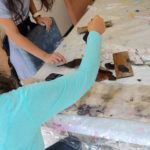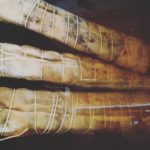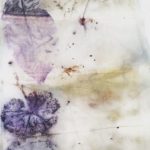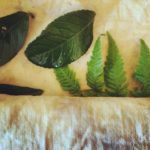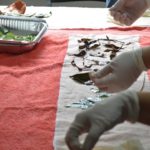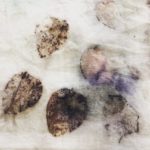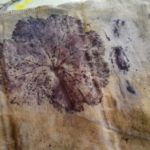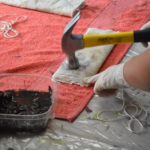Eco-Print Workshop with Amanda Hippert
 Come take an eco-printing workshop!
Come take an eco-printing workshop!
This workshop will incorporate a mono printing technique on fabric, using plants. You will learn how to use a technique called “Eco-Printing”, using native Costa Rican plants that give a beautiful range of colors to fabric naturally. We will be using different natural fibers to print on, like cotton and silk. If you are a textile lover or a designer this is a great way to learn how to create patterns and how to design your own fabric inspired by nature.
This will be a two-Day workshop, the first day will be learning about the process where you will be able to print your own silk scarf, a bandana or even a tote bag with this technique. The second day we will unwrap our projects to see the results, this technique requires an overnight printing process, on the second day we will also have short discussion of the results and the designs.
During my workshops I try to make sure my students understand this technique the best way possible so they will have the tools and understanding to be able to do it on their own after the workshop. I am very receptive to questions that come along and even open to suggestions the students want to experiment on their own during the workshop. I hope that during this workshop I will be able to learn as much from you like you will learn from me. ($45 per session)
$45 INCLUDES MATERIALS AND 3 HR SESSION on consecutive days
2 – half day sessions available: Mornings or Afternoons
Friday Jan 26th & Saturday Jan 27th — 9:00-12:00
Friday Jan 26th & Saturday Jan 27th — 2:00- 5:00
Mornings
SOLD OUT!!
Afternoons
SOLD OUT!!
Mornings
SOLD OUT
Afternoons
SOLD OUT
Eco-print is the technique of printing with the pigments found in plants on to a fabric, it’s a process of oxidation of the plants onto natural fibers. Eco-printing is a beautiful way of creating patterns with nature. Each plant used for this process gives a different color and shape, we can explore the unlimited varieties of pigments that plant’s have to offer. This technique has a very low impact on the environment as well, it’s mostly using nature as our color palette with a minimum amount of modifiers and harmful substances.
Amanda Hippert
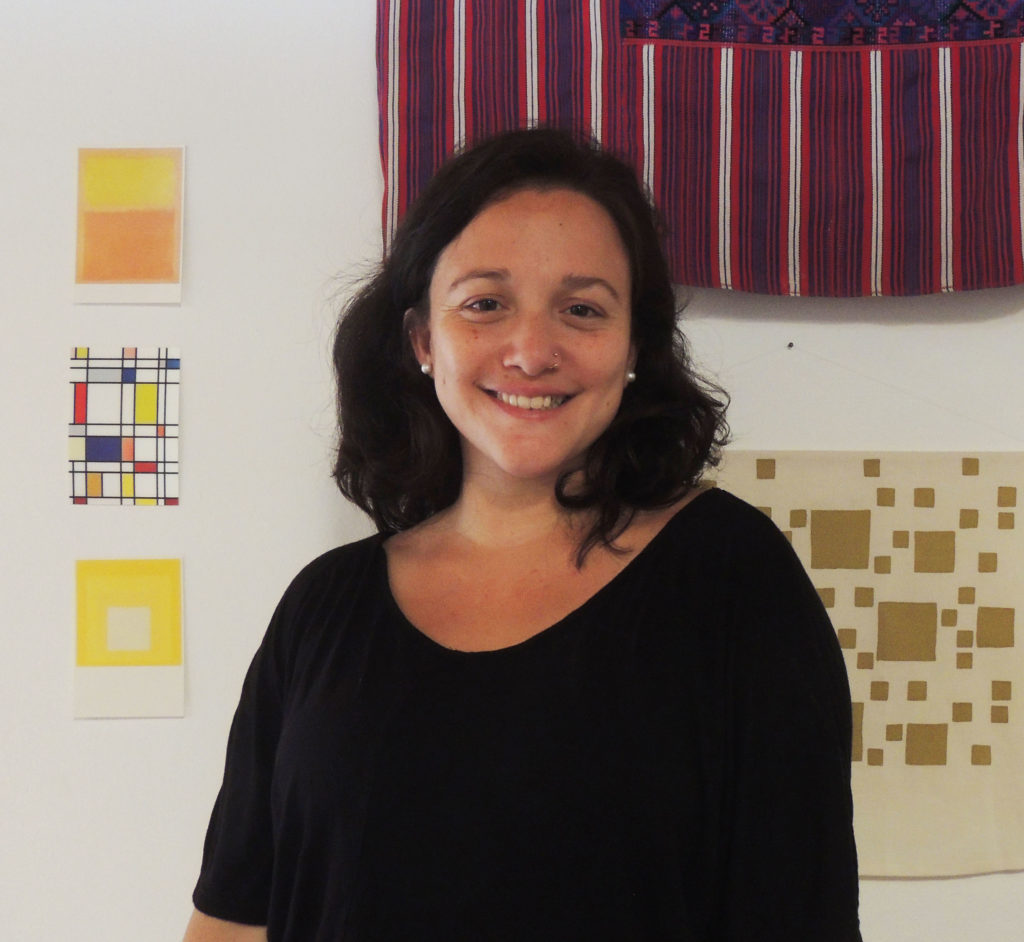 I am a textile designer raised in Costa Rica with roots in Buffalo, NY. I enjoy working in different mediums, but I mostly enjoy combining botany and textiles as well as repurposing materials. After living for 7 years in upstate New York I came back to my home country Costa Rica in 2015. I have taught several textile workshops in San Jose, Costa Rica and Buffalo, NY. I completed my studies in Fibers Design in Buffalo, NY in 2013 and have taught art classes of all ages at Albright Knox Art Gallery as well for about 4 years.
I am a textile designer raised in Costa Rica with roots in Buffalo, NY. I enjoy working in different mediums, but I mostly enjoy combining botany and textiles as well as repurposing materials. After living for 7 years in upstate New York I came back to my home country Costa Rica in 2015. I have taught several textile workshops in San Jose, Costa Rica and Buffalo, NY. I completed my studies in Fibers Design in Buffalo, NY in 2013 and have taught art classes of all ages at Albright Knox Art Gallery as well for about 4 years.
Most of my work is done with natural fibers, recycled textiles and using natural plant pigments for color. I’ve been exploring and learning the techniques of natural dyeing since 2012. I first started to use local plants from upstate New York, then started to grow my own plants as well, and now I’m currently exploring the tropical coloring plants that Costa Rica has to offer.

